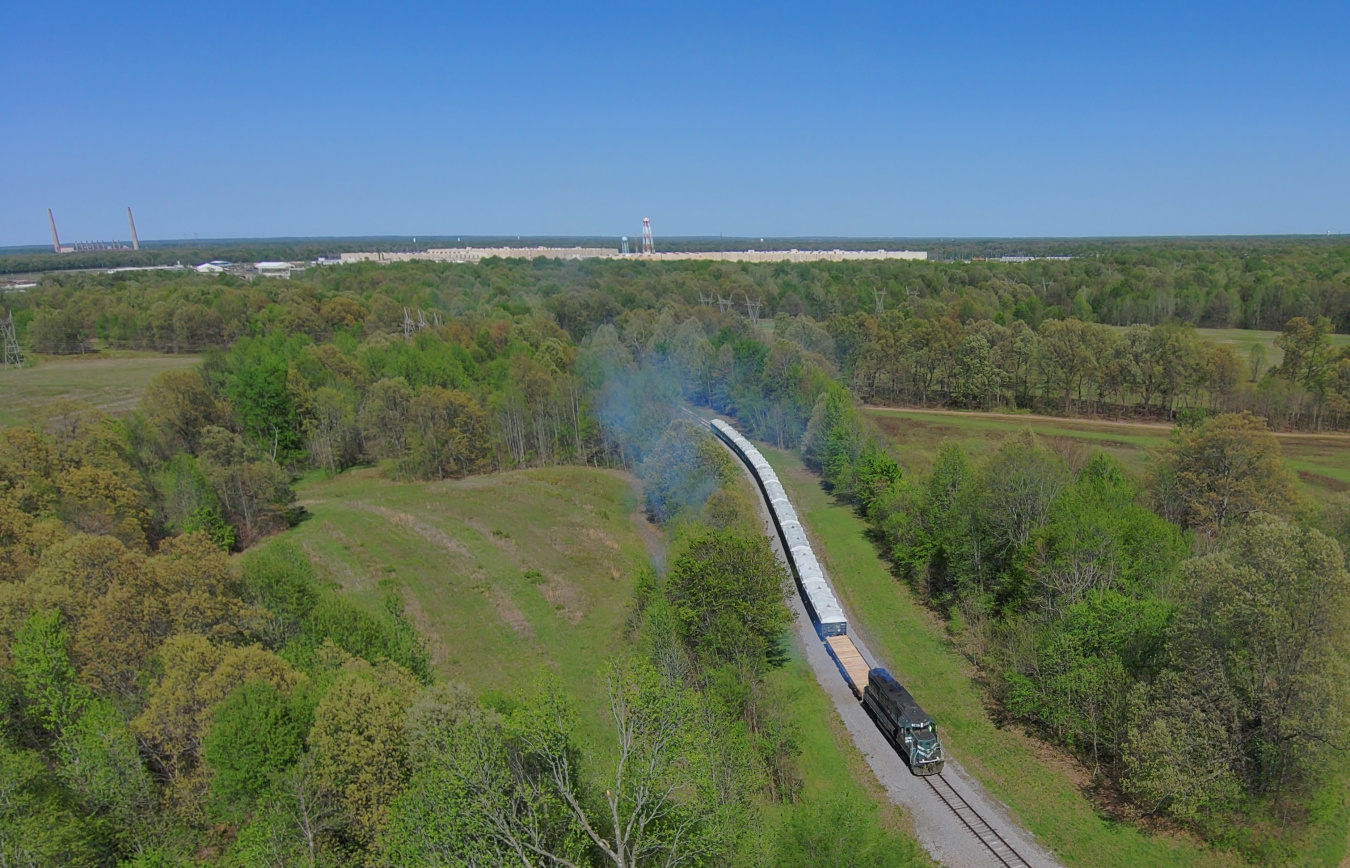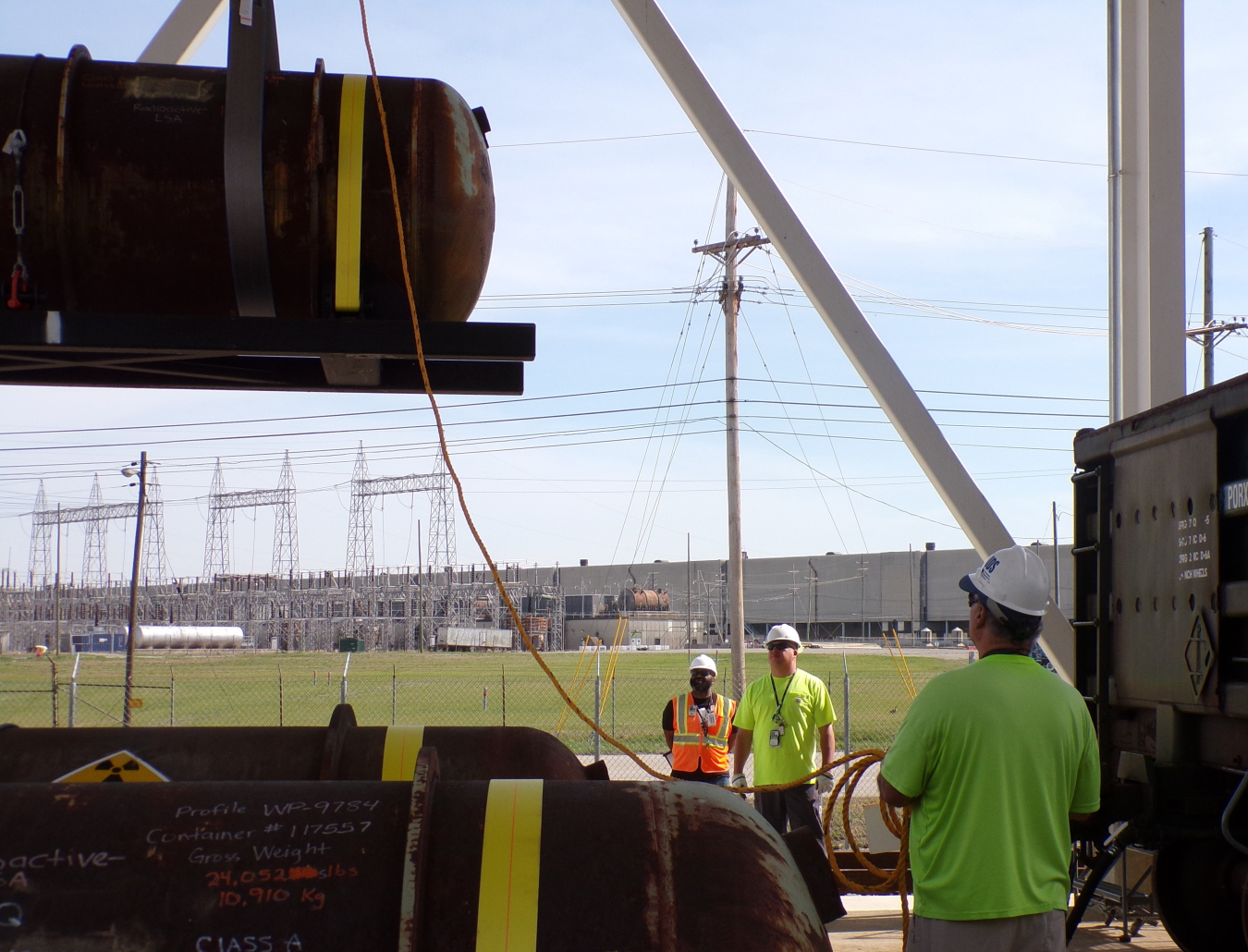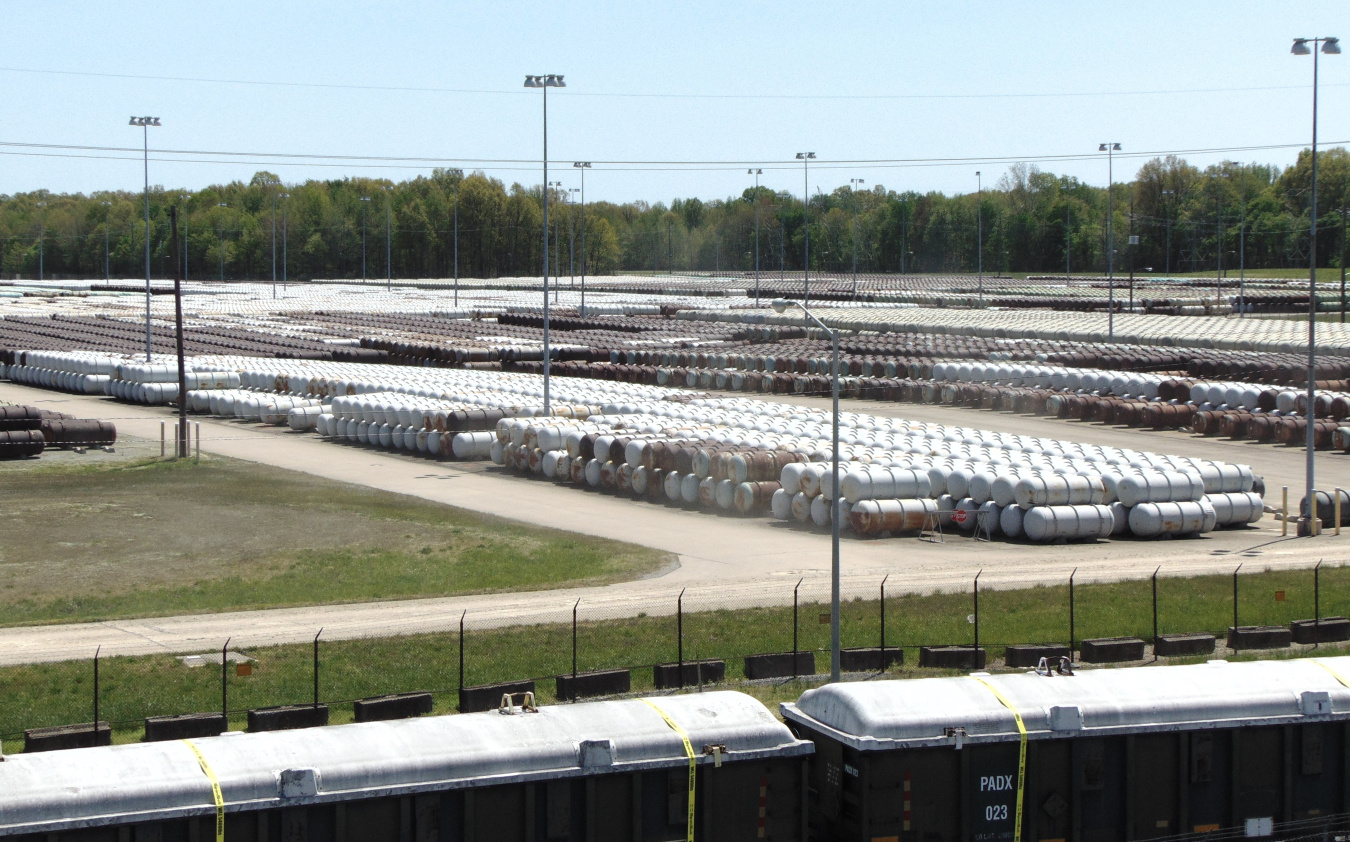EM has successfully commenced a major disposal effort for a key uranium-enrichment byproduct with the recent arrival of 60 uranium-oxide storage cylinders by rail at a licensed facility in west Texas.
Office of Environmental Management
May 9, 2023
LEXINGTON, Ky. – EM has successfully commenced a major disposal effort for a key uranium-enrichment byproduct with the recent arrival of 60 uranium-oxide storage cylinders by rail at a licensed facility in west Texas.
"This first multi-car shipment from Paducah marked an important milestone toward achieving large-scale, routine disposal of uranium oxide, thereby addressing one of the nation’s most significant environmental legacies from the Cold War era,” said Joel Bradburne, manager of EM’s Portsmouth/Paducah Project Office (PPPO).
PPPO oversees EM cleanup at the former Portsmouth, Ohio and Paducah, Kentucky gaseous diffusion plant (GDP) sites.

DOE’s inventory of depleted uranium hexafluoride (DUF6) resulted from more than 50 years of uranium enrichment at the GDPs. Close to 70,000 cylinders are safely maintained in storage at Paducah in western Kentucky and its sister site near Portsmouth, Ohio. More than 7,300 of the cylinders have been converted to date at the sites.
PPPO designed, constructed, and by 2011, had commissioned two unique plants to convert the inventory of more than 700,000 metric tons of DUF6 to more stable forms for safe reuse and disposal. The two coproducts are depleted uranium oxide and aqueous hydrofluoric acid. The latter chemical is sold to industry to help offset conversion costs.
In September 2021, EM successfully completed a pilot shipment from the Paducah Site during which lessons were learned that played a role in achieving the recent shipping milestone. The pilot effort also led to the development of a method that avoids requiring personnel to be in rail cars while they are loaded to improve safety. The recent major shipment from Paducah will be followed soon by the first shipment from Portsmouth.

The EM operations and maintenance contractor for the project, Mid-America Conversion Services (MCS), uses special gondola rail cars outfitted with GPS trackers to provide for continuous monitoring during transport. Complex logistics and coordination between departments is facilitated and made safer with new staging areas in the project’s cylinder-storage and maintenance yards.
“This is an exciting time and a testament to the hard work and dedication of our team to DOE’s mission to remove legacy waste through permanent, safe disposal,” Dutch Conrad, MCS president and project manager, said of the shipping milestone.
Conrad added that the recent shipment is the first of many that are anticipated.
“Effective communication and collaboration among the United Steel Workers workforce, DOE, MCS and the railroad will help ensure safe delivery of potentially hundreds of cylinders per year from both DUF6 facilities,” he said.
To receive the latest news and updates about the Office of Environmental Management, submit your e-mail address.

